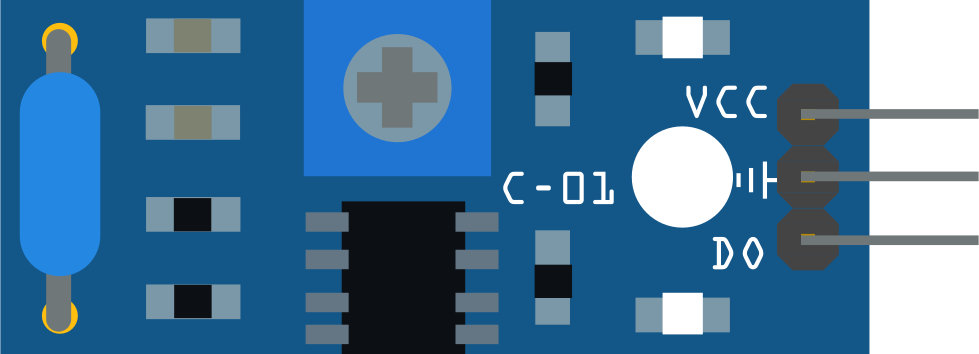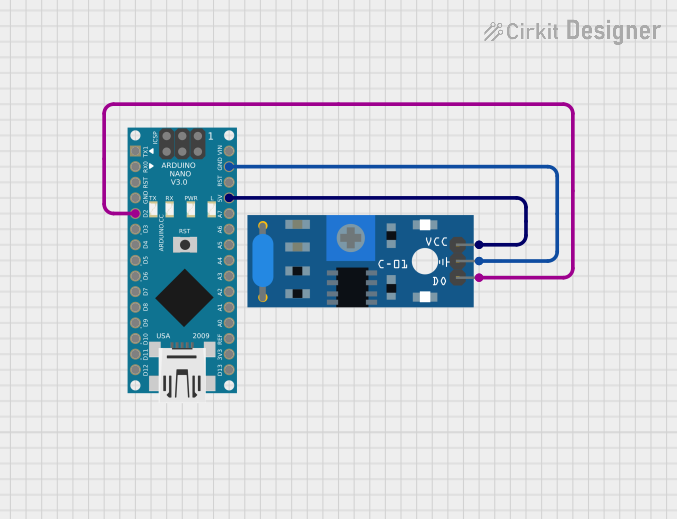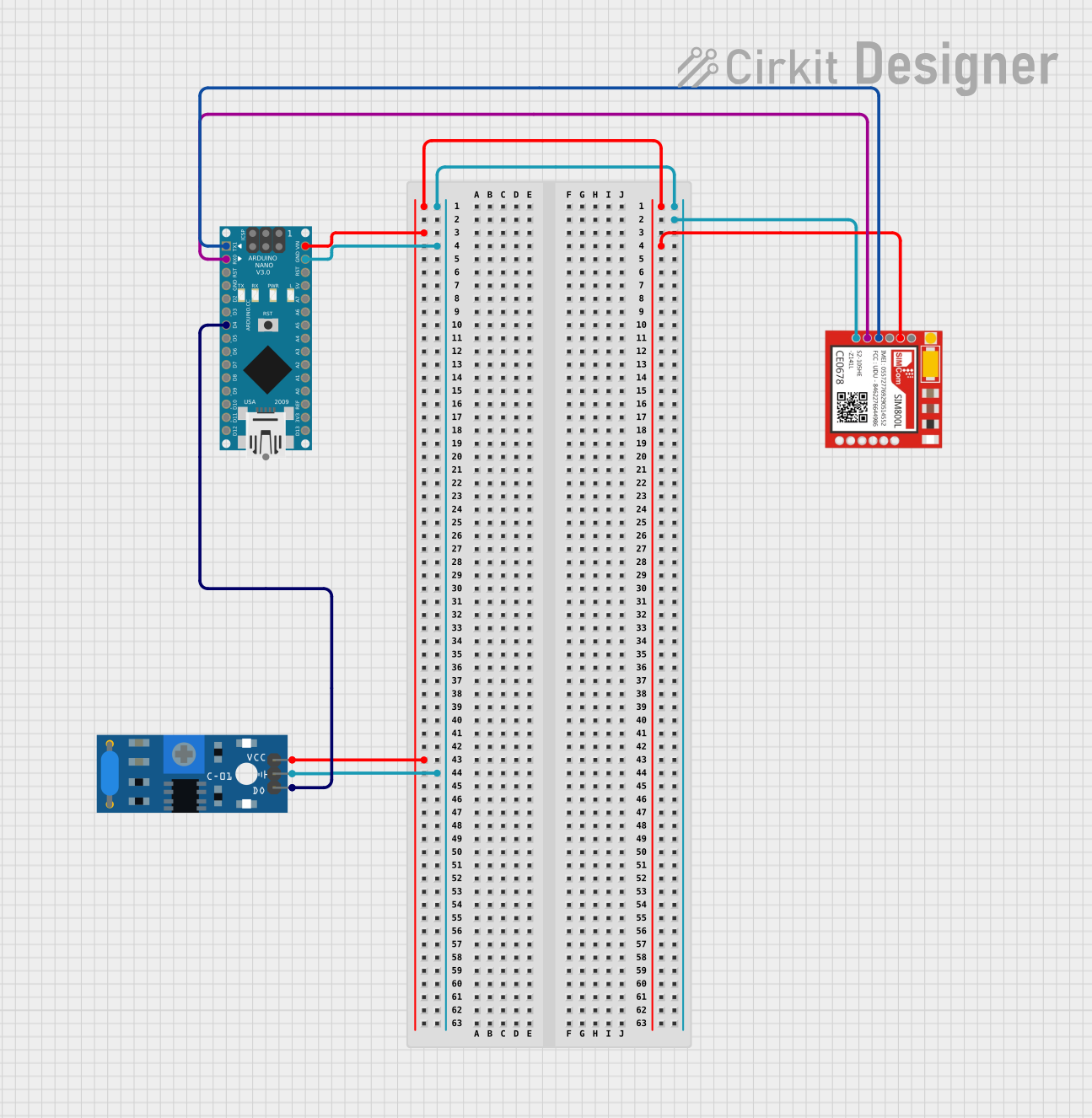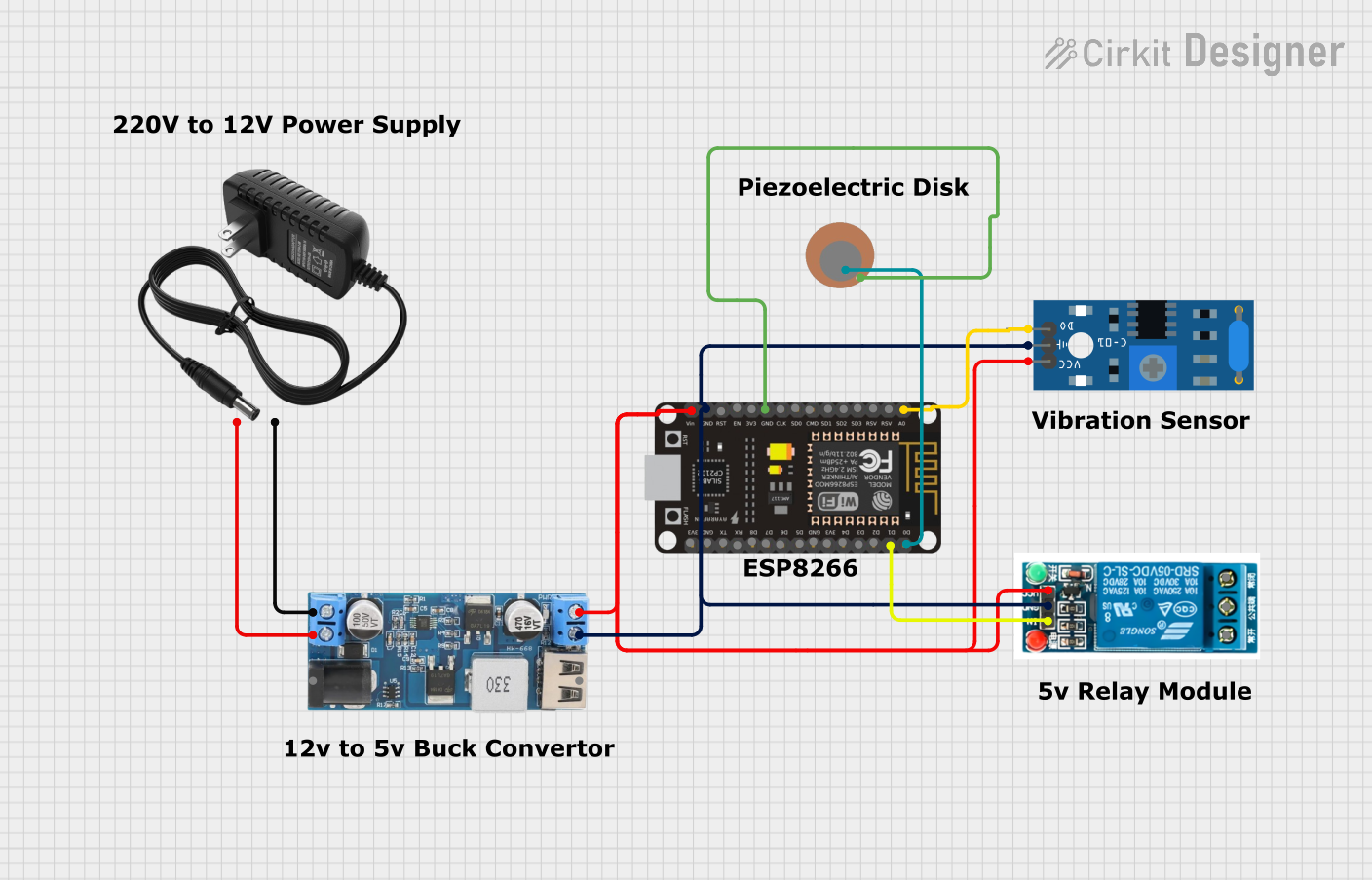
How to Use SW-420 Vibration Sensor: Examples, Pinouts, and Specs

 Design with SW-420 Vibration Sensor in Cirkit Designer
Design with SW-420 Vibration Sensor in Cirkit DesignerIntroduction
The SW-420 Vibration Sensor is a compact and reliable electronic component designed to detect vibrations and movements. It is commonly used in security systems, industrial automation, and DIY electronics projects. When vibrations exceed a predefined threshold, the sensor outputs a signal, making it ideal for triggering alarms, activating devices, or logging events.
Explore Projects Built with SW-420 Vibration Sensor

 Open Project in Cirkit Designer
Open Project in Cirkit Designer
 Open Project in Cirkit Designer
Open Project in Cirkit Designer
 Open Project in Cirkit Designer
Open Project in Cirkit Designer
 Open Project in Cirkit Designer
Open Project in Cirkit DesignerExplore Projects Built with SW-420 Vibration Sensor

 Open Project in Cirkit Designer
Open Project in Cirkit Designer
 Open Project in Cirkit Designer
Open Project in Cirkit Designer
 Open Project in Cirkit Designer
Open Project in Cirkit Designer
 Open Project in Cirkit Designer
Open Project in Cirkit DesignerCommon Applications
- Security systems to detect unauthorized access or tampering
- Earthquake detection and monitoring systems
- Industrial machinery vibration monitoring
- DIY projects for motion-triggered responses
- Smart home automation systems
Technical Specifications
The SW-420 Vibration Sensor is built for ease of use and integration into various electronic systems. Below are its key technical details:
General Specifications
| Parameter | Value |
|---|---|
| Operating Voltage | 3.3V to 5V |
| Output Type | Digital (High/Low) |
| Sensitivity Adjustment | Adjustable via onboard potentiometer |
| Output Signal | High (no vibration) / Low (vibration detected) |
| Dimensions | 32mm x 14mm x 8mm |
| Operating Temperature | -40°C to +85°C |
Pin Configuration
The SW-420 Vibration Sensor has three pins for easy interfacing with microcontrollers and other devices. Below is the pinout:
| Pin Name | Description |
|---|---|
| VCC | Power supply input (3.3V to 5V) |
| GND | Ground connection |
| DO | Digital output signal (High/Low) |
Usage Instructions
The SW-420 Vibration Sensor is straightforward to use in a circuit. Follow the steps below to integrate it into your project:
Connecting the Sensor
- Power the Sensor: Connect the
VCCpin to a 3.3V or 5V power source and theGNDpin to ground. - Read the Output: Connect the
DOpin to a digital input pin on your microcontroller or logic circuit. - Adjust Sensitivity: Use the onboard potentiometer to set the vibration sensitivity. Turning it clockwise increases sensitivity, while turning it counterclockwise decreases it.
Example Circuit with Arduino UNO
Below is an example of how to connect the SW-420 Vibration Sensor to an Arduino UNO:
Circuit Connections
VCC→ Arduino5VGND→ ArduinoGNDDO→ Arduino digital pin2
Example Code
// SW-420 Vibration Sensor Example Code
// This code reads the sensor's digital output and prints the status to the Serial Monitor.
const int sensorPin = 2; // Digital pin connected to the sensor's DO pin
int sensorState = 0; // Variable to store the sensor's state
void setup() {
pinMode(sensorPin, INPUT); // Set the sensor pin as input
Serial.begin(9600); // Initialize serial communication at 9600 baud
}
void loop() {
sensorState = digitalRead(sensorPin); // Read the sensor's state
if (sensorState == LOW) {
// LOW indicates vibration detected
Serial.println("Vibration detected!");
} else {
// HIGH indicates no vibration
Serial.println("No vibration.");
}
delay(500); // Wait for 500ms before reading again
}
Important Considerations
- Power Supply: Ensure the sensor is powered within its operating voltage range (3.3V to 5V).
- Mounting: Secure the sensor firmly to avoid false triggers caused by loose connections or unintended movements.
- Sensitivity Adjustment: Fine-tune the potentiometer to match the desired vibration threshold for your application.
- Debouncing: If the sensor output fluctuates rapidly, consider adding software debouncing in your code.
Troubleshooting and FAQs
Common Issues and Solutions
No Output Signal
- Cause: Incorrect wiring or insufficient power supply.
- Solution: Double-check the connections and ensure the power supply is within the specified range.
False Triggers
- Cause: Sensitivity set too high or external noise interference.
- Solution: Adjust the potentiometer to reduce sensitivity and ensure the sensor is mounted securely.
Output Always HIGH
- Cause: No vibrations detected or faulty sensor.
- Solution: Verify the sensor is exposed to sufficient vibrations. If the issue persists, test with a replacement sensor.
Output Always LOW
- Cause: Excessive vibrations or damaged sensor.
- Solution: Reduce vibrations or replace the sensor if necessary.
FAQs
Q: Can the SW-420 detect small vibrations?
A: Yes, the sensitivity can be adjusted using the onboard potentiometer to detect even small vibrations.
Q: Is the sensor waterproof?
A: No, the SW-420 is not waterproof. Avoid exposing it to moisture or liquids.
Q: Can I use the SW-420 with a 3.3V microcontroller?
A: Yes, the sensor operates within a voltage range of 3.3V to 5V, making it compatible with 3.3V systems.
Q: How do I know if the sensor is working?
A: The DO pin will output a LOW signal when vibrations are detected. You can monitor this using an LED, multimeter, or microcontroller.
By following this documentation, you can effectively integrate the SW-420 Vibration Sensor into your projects and troubleshoot any issues that arise.